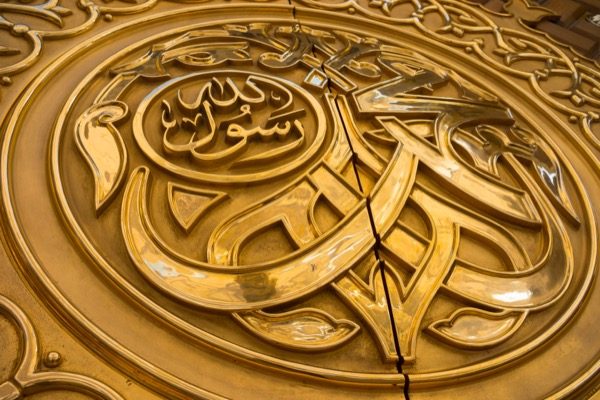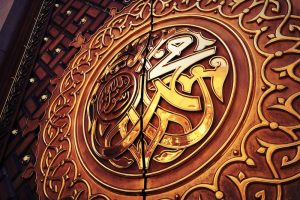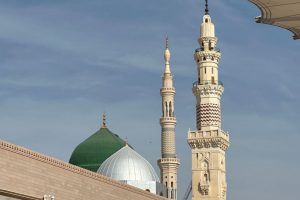
© Shutterstock
Tariq Mahmood, Toronto, Canada
From the meteoric rise of garage start-ups to the conquests of ancient nations, history preaches to us with wisdom and sagacity rarely possessed by the present. Indeed, as a famous Greek proverb declares, we sit in the shade of trees our forefathers planted in the soil.
As the month of fasting concludes, a celebration approaches Muslims around the world. Eid is the culmination of the hard work of a Muslim in Ramadan. It is not a reward for hunger or thirst; rather, it is a triumph of the nearness to Allah attained by Muslims, as Allah says:
‘O ye who believe! fasting is prescribed for you, as it was prescribed for those before you, so that you may become righteous.’[1]
On the precipice of Eid al-Fitr, Muslims find themselves with a choice to grasp firm roots or climb feeble branches. The Islam of the Holy Prophet (sa) embodied the will and word of Allah the Almighty, and therefore informs us of the true essence of Eid. This is the Eid celebrated 1,400 years in the past, and this is the Eid which must be practised today.
So what is the Eid al-Fitr of the Holy Prophet (sa), and how can we follow in the footsteps of the Prophet of Islam (sa)?
Prayer
Eid possesses a special lustre in the realm of worship: an extra prayer is offered to Allah the Almighty in addition to the five daily prayers.[2] This prayer was led by the Holy Prophet (sa) on every Eid, after which the Holy Prophet (sa) advised the people in the ways of righteousness. This fact is further solidified by his practice of proclaiming ‘Allah is the Greatest’ a dozen extra times in prayer.
The Holy Prophet (sa) beautifully explains the blessing of prayer on Eid:
‘One who worships on the nights of the two Eids purely for the sake of Allah, his heart shall be granted eternal life.’[3]
Furthermore, as Allah states that He is the reward for fasting, we must strive to exit Ramadan and stand in the Eid prayer having procured Allah as a powerful Friend during the month of Ramadan.[4] To this effect, the Eid prayer is a celebration of the victory of man; just as worldly armies celebrate with great pomp and extravagance their victory over their enemies, Muslims celebrate their newfound bounty of righteousness with a display of affection towards God Almighty.
With this love, the Holy Prophet (sa) would march towards the Eid Gah (where the Eid prayer is performed) proclaiming the greatness of Allah, would announce it a dozen extra times in the prayer, and would march back home with the greatness of Allah on his lips once more.
Charity
The Holy Prophet (sa) embodied the perfection of a ‘Man of God’ by becoming a man of the people. The companions of the Holy Prophet (sa) relate that the Holy Prophet (sa) would not leave his house for any aspect of Eid until he had given charity to some of his companions.[5] That is, as he worshipped God in a beautiful manner, he would make sure that others had the opportunity to enjoy Eid in the same manner. Such was the beautiful disposition of the Holy Prophet (sa).
The Holy Prophet (sa) understood that a true Eid was when all Muslims had means to celebrate. For this reason, he established the Sadaqat al-Fitr, a charity that was mandatory for every Muslim, whether young or old, male or female.[6] This charity would be distributed amongst the less fortunate and allow the poor to spend their day in happiness, with smiles abound and bellies full.
The Eid of the Holy Prophet (sa) was also a day when women would excel in charity. In is narrated that:
‘The Messenger of Allah (sa) used to go out on the day of Eid and pray two rak‘ahs [units of prayer], then he would deliver the sermon and enjoin giving charity, and the ones who gave most charity were the women.’[7]
Hazrat Abu Sa‘id al-Khudri (ra) testifies to this himself a illustrates the excellence of women when the Holy Prophet (sa) would enjoin charity:
‘The Messenger of Allah (sa) used to go out on the day of Eid…He would say: “Give in charity. Give in charity.” Those who gave most in charity were the women, (they would give) earrings and rings and other things.’[8]
What a sight it must have been to witness adornments being removed and given in service to the poor. Such a triumph of the spirit of sacrifice is testament to a true Eid. This was the magnificence of the Holy Prophet (sa). By him, Allah was praised, and with him the poor were tended to, a day when the Highest and the lowest were shown a superb love.
Personifying the Beauty of Allah
As one can see, Eid is an event of great beauty. People dress up in wonderfully adorned clothes, wearing jewellery and other festive embellishments. This is not contrary to the spirit of Eid but rather helps to foster an understanding of the human self: just as our inner beauty has grown and enhanced over Ramadan, our dresses and suits too should match the occasion.
The worldwide Caliph of the Ahmadiyya Muslim Community, Hazrat Mirza Masroor Ahmad (aba) explains the Holy Prophet’s (sa) commandment regarding Eid and beauty, and states:
‘Those who Allah the Almighty is not pleased with will neither succeed in their faith, nor in this world. On one occasion, the Holy Prophet (sa) also gave a strict warning regarding this. He stated, “Allah Almighty will not allow anyone who has even the slightest bit of arrogance to enter paradise.” Upon this, someone submitted, “A person desires to wear good clothes and nice shoes and look beautiful, then what category would such a person fall under?” The Holy Prophet (sa) stated, “This is not arrogance; Allah the Almighty is Beautiful and loves beauty.”…Thus, to wear nice clothes on the day of Eid, to get ready and wear perfume, etc. are all things which please Allah the Almighty, however, it displeases Allah the Almighty when one displays pride and arrogance due to these things.’[9]
Thus, as we are careful in preserving our inner beauty, Eid is also a time of beautification. Just as Allah is Beautiful, the Holy Prophet (sa) was also beautiful, especially on the day of Eid. It is this Eid which Muslims exemplify in sleek and colourful garments.
Celebration
On the day of Eid al-Fitr, the Holy Prophet (sa) would especially go out of his way to mark the end of Ramadan. He would eat something sweet before departing from his house, often dates, whereas on Eid al-Adha, the Holy Prophet (sa) would fast until after the Eid sacrifice. This small tradition permeates the early-morning rituals of Muslims across the world, before journeying to the Eid hall.[10]
Various festivities would also take place during an ordinary Eid of the Holy Prophet (sa). It is narrated that two Ansari women were sitting with Hazrat A’ishah (ra), singing and playing the drum. When Hazrat Abu Bakr (ra) tried to reprimand them because he deemed it inappropriate, the Holy Prophet (sa) responded ‘O Abu Bakr, every people has its festival and this is our festival.’[11] The Holy Prophet (sa) understood the requirements of a festive environment, and thus allowed such celebrations as well.
It is also narrated that there were great displays on the day of Eid as well. Some Ethiopians travelled to Madinah to display a circus-like event with swords and spears. It is narrated that the Holy Prophet (sa) watched this alongside his wife Hazrat A’ishah (ra).[12] As such, the Holy Prophet (sa) explained the necessity of leisure, especially that which is done with the family.
The Holy Prophet (sa) illustrates the happy and joyful atmosphere that the day of Eid should possess. This Eid is a day of love and harmony. Just as one perfects their spiritual life and physical life, a social purity must also be adopted. If one pollutes their life with social disputes and grievances, how can they expect a joyous Eid, free of toxicity and bitterness?
Conclusion
The life of the Holy Prophet (sa) is our case study to understand the perfection of Eid al-Fitr. Every single action speaks to a larger discipline and display of divine colours. As other holidays mark worldly hallmarks, the Eid of the Holy Prophet (sa) was a conquest to win the love of Allah and to serve His creation.
This came about with humble servitude. As his life is examined, one must undoubtedly declare the transcendental greatness with which the Mercy for all Mankind (sa) concluded the month of Ramadan.
A perfect celebration of the Perfect Messenger of Allah (sa): this is Eid in its entirety.
About the Author: Tariq Mahmood is a graduate of the Ahmadiyya Institute of Theology and Modern Languages in Canada and serves as Secretary of The Existence Project Team for The Review of Religions.
ENDNOTES
[1] The Holy Quran, 2:184.
[2] Sunan al-Nasa’i, Hadith 1587.
[3] Eid al-Fitr Sermon, May 2, 2022, https://rorenglish.wpengine.com/38537/understanding-the-true-spirit-of-eid/
[4] Sahih al-Bukhari, Hadith 7538.
[5] Sunan Ibn Majah, Hadith 1755.
[6] Sunan al-Nasa’i, Hadith 2505.
[7] Ibid., Hadith 1579.
[8] Sunan Ibn Majah, Hadith 1288.
[9] Eid al-Fitr Sermon, May 2, 2022, https://rorenglish.wpengine.com/38537/understanding-the-true-spirit-of-eid/
[10] Khutbat-e-Tahir, Eidain, p. 166.
[11] Sunan Ibn Majah, Hadith 1898.
[12] Sahih al-Bukhari, Hadith 949.




Add Comment